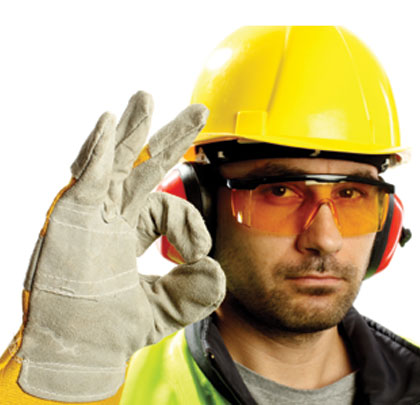Workers on roadway construction jobsites are exposed to possible injury and death from moving construction vehicles and equipment. The National Institute for Occupational Safety and Health (NIOSH) recommends that specific procedures and controls be in place at roadway construction worksites to help prevent injuries and deaths from backing construction vehicles and equipment.
STANDARD OPERATING PROCEDURES
Develop, implement, and enforce standard operating procedures that address worker safety and minimize work to be performed near vehicles and equipment.
- Use equipment designed to minimize blind areas and equipment with proximity warning systems.
- Establish safe work practices for night work and backing equipment, requiring high visibility apparel.
- Design jobsites to minimize backing vehicles and equipment.
- Provide adequate oversight and supervision by a competent person.
- Ensure that drivers only back under the direction of a spotter.
- Ensure daily communication between the prime and subcontractors to discuss any changes or revisions in construction traffic flow.
- Channel construction vehicles and equipment away from workers using visual safety devices (retro reflective barrels, delineators, portable barricades, cones).
- Install signs to guide workers on foot with respect to traffic areas, vehicle flow, and worker-free zones.
- Ensure compliance with worker safety, traffic control, vehicle regulations, and consensus standards pertaining to work in roadway construction jobsites.
EQUIPMENT OPERATION AND SERVICING
Ensure that construction vehicles and equipment operating on-site are maintained in safe operating condition at all times by developing and implementing the following:
- A scheduled maintenance program for all roadway construction vehicles and equipment.
- Safety features (reverse alarm, video cameras) installed in accordance with manufacturer’s specifications, that operate as intended, and function properly.
- Inspection of all vehicles, equipment, and safety devices (brakes, lights, horns, and reverse alarms) at the beginning of each work shift. Defective vehicles, equipment, and safety devices should be immediately reported and removed from service until repairs are made.
- Installation of collision avoidance or proximity warning systems (radar and sonar devices, or tag-based systems that use personal electronic tags to detect a marker field generated by a transmitter on the vehicle) or monitoring technologies (video cameras and additional mirrors) on construction vehicles and equipment to increase the likelihood that equipment operators will detect workers on foot around their equipment.
- Be aware of equipment and vehicle blind areas and watch for workers.
- Use and maintain contact (visually, verbally, or by hand signals) with a spotter when backing any vehicle or equipment. If contact with the spotter is lost, STOP immediately.
COMMUNICATION
Develop, implement, and test the method(s) of communication that will be used during operations. At the start of each shift, review communications signals (verbal, hand signals, flags) between spotters, machine operators, truck drivers, and workers on foot. Prohibit the use of personal cellular phones and head phones or similar items that could pose a distraction. Provide two-way radios to personnel who coordinate vehicular and equipment activity within the jobsite.
TRAINING
Develop, implement, and enforce a comprehensive safety and training program in the workers’ primary language and at the appropriate literacy level that includes the following information.
- Targeted training on the operator’s visual limits of the specific equipment being used on the site, and provided to both equipment operators and workers required to work on foot near the equipment blind areas.
- Daily pre-work safety meetings to discuss the work to be performed, safety hazards, safe work procedures, and the method of communicating changes in the work plan. ■
About The Author For more information on preventing worker injuries and deaths from backing construction vehicles and equipment at roadway construction jobsites, visit the NIOSH Safety and Health Topic Page on Highway Work Zones at www.cdc.gov/niosh/topics/highwayworkzones/.
Modern Contractor Solutions, September 2014
Did you enjoy this article?
Subscribe to the FREE Digital Edition of Modern Contractor Solutions Magazine!



